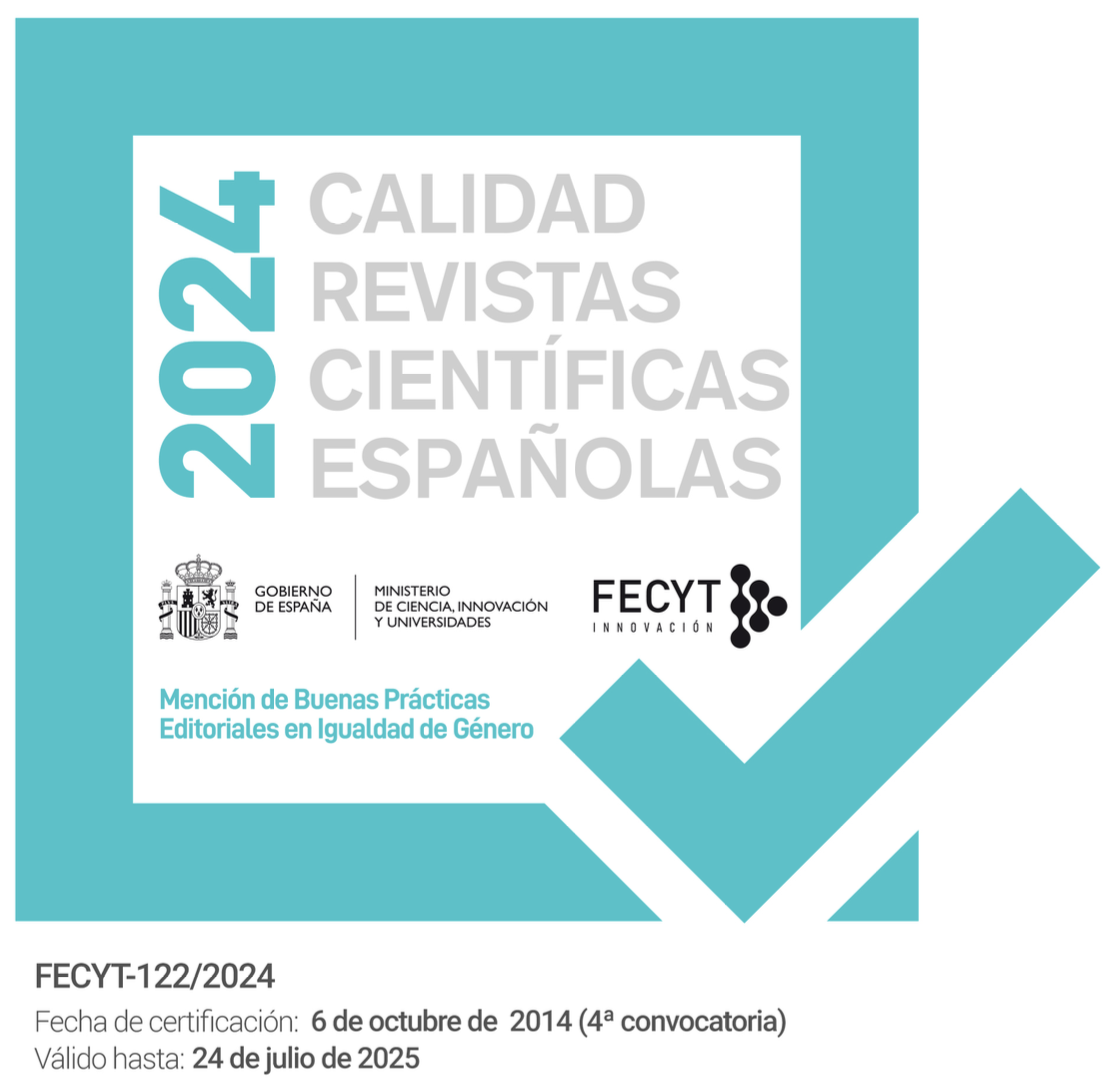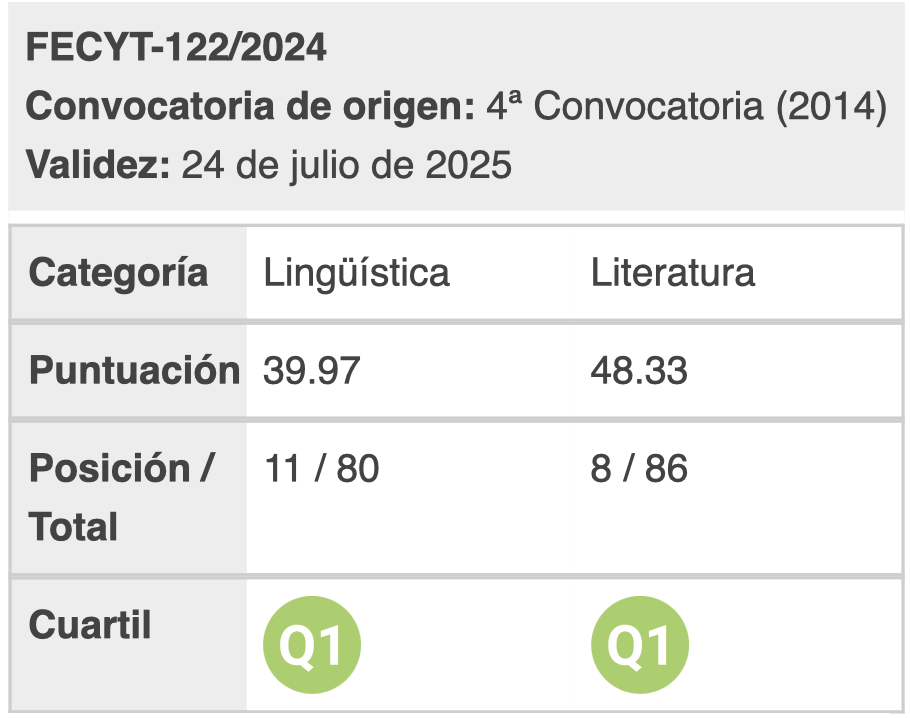Blending Fiction and the Real: Discerning the Most Robust Evolutionary Pattern in Narrative Literature
DOI:
https://doi.org/10.28914/Atlantis-2024-46.2.05Abstract
The most common understanding of fiction is as a piece of literature that describes imaginary events and people, something invented and not true. In this sense, fiction can be explained and understood as standing in opposition to the reality. If we instead look at fiction from the perspective of biopoetics and cognitive theory, it becomes clear that it does not show a sharply defined opposition to reality. It is this fuzziness of boundaries between fiction and the real that we are concerned with in this article; our hypothesis includes the application of Blending Theory (BT) to outline the cognitive processes that sustain the conceptualisation of fictive narrative. Our article attempts to propose a model stemming from cognitive theories of language, that accounts for the underlying cognitive processes that constitute the complex meaning construction when dealing with fictive narrative.
Downloads
Metrics
References
Bernárdez, Enrique. 1982. Introducción a la lingüística del texto. Vol 1. Madrid: Espasa-Calpe.
—. 2005. “Social Cognition: Variation, Language and Culture in a Cognitive Linguistic Typology.” In Ruiz de Mendoza Ibáñez and Peña Cervel 2005, 191-224.
—. 2007. “Synergy in the Construction of Meaning.” In Fabiszak 2007, 15-37.
Brandt, Line. 2010. “Language and Enunciation: A Cognitive Inquiry with Special Focus on Conceptual Integration in Semiotic Meaning Construction.” PhD diss., University of Aarhus.
— and Per Aage Brandt. 2005. “Making Sense of a Blend: A Cognitive- Semiotic Approach to Metaphor.” Annual Review of Cognitive Linguistics 3: 216-49.
Bravo-Utrera, Sonia and Rosario García-López, eds. 2009. Estudios de traducción. Perspectivas. Bern: Peter Lang.
Bundgaard, Peer. 2006. “Principles of Linguistic Composition below and beyond the Clause.” Pragmatics & Cognition 14 (3): 501-26.
—. 2007. “The Cognitive Import of the Narrative Schema.” Semiotica 165: 247-61.
Calero-Vaquera, Ma Luisa and Ma Ángeles Hermosilla-Álvarez, eds. 2013. Lenguaje, literatura y cognición. Córdoba: Servicio de Publicaciones de la Universidad de Córdoba.
Curie, Gregory, Petr Kotátko and Martin Pokorny, eds. 2012. Mimesis: Metaphysics, Cognition, Pragmatics. London: College Publications.
De Beaugrande, Robert. 1980. Text, Discourse and Process: Towards a Multidisciplinary Science. Norwood: Prentice Hall Press.
De Jaegher, Hanne and Ezequiel Di Paolo. 2007. “Participatory Sense-Making.” Phenomenology and the Cognitive Sciences 6 (4): 485-507.
Evans, Vyvyan. 2007. A Glossary of Cognitive Linguistics. Edinburgh: Edinburgh UP.
Fabiszak, Małgorzata, ed. 2007. Language and Meaning. Berlin: Peter Lang.
Fauconnier, Gilles. 1994. Mental Spaces: Aspects of Meaning Construction in Natural Language. Cambridge: Cambridge UP.
— and Mark Turner. 1998. “Conceptual Integration Networks.” Cognitive Science 22 (2): 133- 87.
— and Mark Turner. 2002. The Way We Think: Conceptual Blending and the Mind’s Hidden Complexities. New York: Basic Books.
Fillmore, Charles. 1982. “Frame Semantics.” In Geeraerts 1982, 373-400.
Frank, Roslyn et al, eds. 2008. Body Language and Mind. Vol 2, Sociocultural Situatedness. Berlin: De Gruyter.
Gallese, Vittorio. 2018. “Embodied Simulation and its Role in Cognition.” Reti, Saperi, Linguaggi (1), 31-46.
—, Christian Keysers and Giacomo Rizzolatti. 2004. “A Unifying View of the Basis of Social Cognition.” Trends in Cognitive Sciences 9 (8): 396-403.
— and Hannah C. Wojciehowski. 2011. “How Stories Make Us Feel: Toward an Embodied Narratology.” California Italian Studies 2 (1): 1-35.
Geeraerts, Dirk, ed. 1982. Cognitive Linguistics: Basic Readings. Berlin: De Gruyter.
Gerrig, Richard J. 1993. Experiencing Narrative Worlds. New Haven: Yale UP.
—. 2010. “Readers’ Experiences of Narrative Gaps.” Storyworlds 2: 19-37.
Gontier, Nathalie. 2015a. “Reticulate Evolution Everywhere.” In Gontier 2015b, 1-40.
—, ed. 2015b. Reticulate Evolution. Berlin: Springer.
Guerra, Juani 2001. “Simplixity and Complexity: The Topology of the Short Story and the Novel.” Short Story Journal 9 (1): 92-111.
—. 2009. “Cognitive Informalism: The Art House of Fiction and Henry James’s Poethics.” In Bravo-Utrera and García-López 2009, 535-56.
—. 2011. “Cognitive Poetics and Biocultural (Con)Figurations of Life, Cognition and Language: Towards a Theory of Socially Integrated Science.” Pensamiento, Revista de Investigación e Información Filosófica 67 (254): 843-50.
—. 2013. “Poética cognitiva. (Con)figurándonos lo real.” In Calero-Vaquera and Hermosilla-Álvarez 2013, 253-71.
— and Svend Ostergaard. 2017. “Tecnopoiesis como construcción dinámica de conocimiento complejo. Una explicación biopoética de la circunvolución creativa de las ciencias humanas, naturales y tecnológicas.” Icono14 15 (1): 235-55.
Hart, Cristopher. 2007. “Critical Discourse Analysis and Conceptualisation: Mental Spaces, Blended Spaces and Discourse Spaces.” In Hart and Lukes 2007, 107-31.
— and Dominik Lukes, eds. 2007. Cognitive Linguistics in Critical Discourse Analysis: Application and Theory. Newcastle Upon Tyne: Cambridge Scholars.
Hutchins, Edwin. 2000. “Distributed Cognition.” In Smelser and Baltes 2000, 2068- 72.
James, Henry. 1893. “The Real Thing.” Online version. [Accessed August 31, 2008; no longer available].
—. 1894a. “The Art of Fiction.” In James 1894b, 375-408.
—. 1894b. Partial Portraits. London: Macmillan and Co.
Kuzmicova, Anezka. 2012. “Fidelity Without Mimesis: Mental Imagery from Visual Description.” In Curie, Kotátko and Pokorny 2012, 271-313.
Lakoff, George and Mark Johnson. 1980. “The Metaphorical Structure of the Human Conceptual System.” Cognitive Science 4 (2): 195-208.
Langacker, Ronald. 1987-1991. Foundations of Cognitive Grammar. Vol I-II. Stanford: Stanford UP.
—. 1991. Concept, Image and Symbol: The Cognitive Basis of Grammar. Berlin: De Gruyter.
—. 1999. “Virtual Reality.” Studies in the Linguistic Sciences 29 (2): 77-103.
—. 2008. Cognitive Grammar: A Basic Introduction. Oxford: Oxford UP.
Leontiev, Alicei, Alexander Luria and Stanislav Smirnov, eds. 1966. Psychological Research in the USSR. Vol 1. Moscow: Progress Publishers.
Maienborn, Claudia, Klaus von Heusinger and Paul Portner, eds. 2019. Semantics: Theories. Berlin: De Gruyter.
Manteiga, Victor. “A Proposal for a Cognitive Semantics Study of the Literary Atmosphere.” Lecture given at the University of Las Palmas de Gran Canaria, 2009.
Pishwa, Hanna. 2009. Language and Social Cognition: Expression of the Social Mind. Berlin: De Gruyter.
Risku, Hanna. 2002. “Situatedness in Translation Studies.” Cognitive Systems Research 3 (3): 523-33.
Ruiz de Mendoza Ibáñez, Francisco J. 1997. “Metaphor, Metonymy and Conceptual Interaction.” Atlantis 19 (1): 281-95.
— and Sandra Peña Cervel. 2002. “Cognitive Operations and Projection Spaces.” Jezikoslovlje 3 (1-2): 131-58.
— and Sandra Peña Cervel, eds. 2005. Cognitive Linguistics: Internal Dynamics and Interdisciplinary Interaction. Berlin: De Gruyter.
Sharifian, Farzad. 2003. “On Cultural Conceptualisations.” Journal of Cognition and Culture 3 (3): 187-207.
—. 2008. “Distributed, Emergent Cultural Cognition, Conceptualisation and Language.” In Frank et al. 2008, 109-36.
—. 2009. “On Collective Cognition and Language.” In Pishwa 2009, 163-80.
—, ed. 2017. Cultural Linguistics: Cultural Conceptualisations and Language. Vol 8. Amsterdam and Philadelphia: John Benjamins.
Sinha, Chris. 2005. “Blending Out of the Background: Play, Props and Staging in the Material World.” Journal of Pragmatics 37 (10): 1537-54.
—. 2017a. “Language as a Biocultural Niche and Social Institution.” In Sinha 2017b, 138-54.
—, ed. 2017b. Ten Lectures on Language, Culture and Mind. Leiden: Brill.
Smelser, Neil J. and Paula B. Baltes, eds. 2000. International Encyclopedia of the Social & Behavioral Sciences (IESBS). Amsterdam: Elsevier.
Talmy, Leonard. 2000. Towards a Cognitive Semantics: Concept Structuring Systems. Cambridge, MA: MIT Press.
—. 2019. “Cognitive Semantics: An Overview.” In Maienborn, von Heusinger and Portner 2019, 622-42.
Tylén, Kristian et al. 2013. “Making Sense Together: A Dynamical Account of Linguistic Meaning-Making.” Semiotics 194: 39-62.
Vygotsky, Lev Semenovich. 1966. “Development of the Higher Mental Functions.” In Leontiev, Luriya and Smirnov 1996, 11-45.








